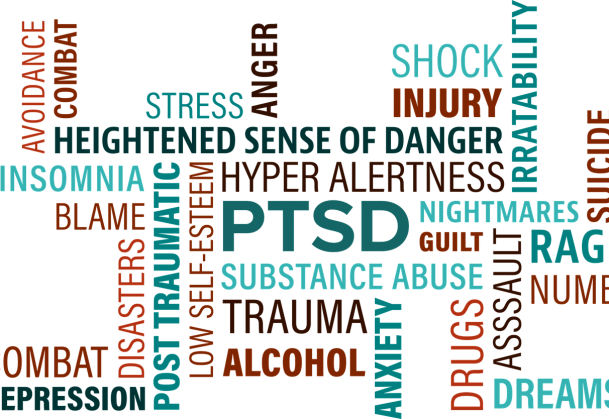
‘Working out’ PTSD
August 8, 2019
Post-Traumatic Stress Disorder (PTSD) is defined as a group of stress reactions that develop after we witness a traumatic event such as serious injury, violence to ourselves or others or death. After experiencing a trauma it is common to experience a number of emotions that can include fear, sadness, grief and anger. These emotions will fade for some people but for others they can stay and begin to have a negative impact on their life. PTSD can develop from a single event or for some people it may be from multiple traumas. Approximately 25% of people who experience a traumatic event will develop PTSD. This translates to 12% of individuals in Australia who live with or will experience this condition in their life time.
PTSD is diagnosed as a psychological condition but it can have a profound effect on an individuals physical and social wellbeing.
Physical signs can include:
- Weight fluctuations (weight gain or loss)
- Increased blood pressure
- Increased sedentary behaviours
- Higher risk of diabetes
Social signs can include:
- Increased time spent at home
- Avoid catching up with family and friends
- Avoidance of busy or noise stimulating areas
- Increased time spent away from work
How can exercise help?
Exercise has been proven to not only reduce these physical signs of someone with PTSD it can be a great mental outlet. There are always a lot of questions surrounding how and when someone should exercise:
What should I do?
- There are many types of exercise that can help but the most important is one that the individual enjoys! Strength/resistance based exercise, aerobic exercise and mindful-based exercise practice such as yoga can all help but it all comes down to what you enjoy and what will keep you motivated.
How much should I do?
- It’s important to remember the Physical Activity Guidelines when deciding how much exercise you should be doing.
What will give me the quickest results?
- This can be a long process. Give yourself some SMART (Specific, Measurable, Achievable, Realistic, Time-Oriented) goals. This can give you a check list feeling when you tick off one of your goals. If you aren’t sure how to set your goals you can talk with an exercise physiologist from our team.
What if I don’t like it?
- Try something different! Options are endless these days and there is no one size fits all. If you don’t know where to begin speak to one of our Exercise Physiologist
If you or someone you know has PTSD and isn’t sure what or where to begin, get in touch with us for some advice.
Other News
Why Runners should do Pilates
Why runners should do Pilates? Simple, it will make you a better run...
June 23, 2023
Managing POTS through exercise
Struggling with exercise since being diagnosed with POTS? This one’s for ...
April 24, 2023
Exercise in Stroke Rehabilitation!
Strokes occur when blood supply to your brain is stopped. This can be tempo...
March 10, 2023







